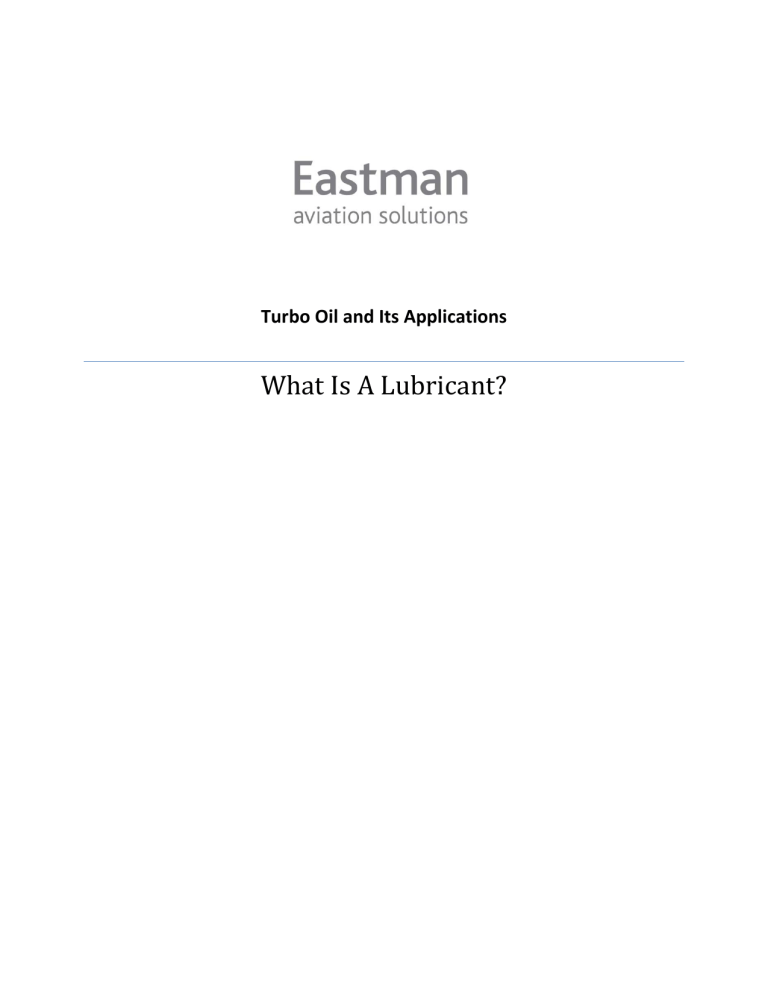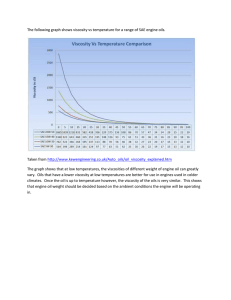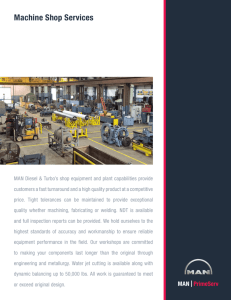File size 146.3 KB File type pdf

Turbo Oil and Its Applications
What Is A Lubricant?
Turbo Oil and Its Applications
What is a lubricant?
It is important to understand the basics of what a lubricant is and what it does. First, it separates moving, solid surfaces. Second, it reduces friction, wear, local heating and corrosion for metallic parts. It also provides cooling and transports debris away. And lastly, it can be used to help monitor the engine or equipment condition.
Synthetic Turbo Oil is a special type of lubricant.
Lubrication history of the aviation industry
Turbo Oils have developed significantly over the last 60 years. Oil stress levels were low in old jet engine models. They were lubricated with petroleum-based oils and had a turbine inlet temperature of 800 degrees Celsius (1945) versus more than 1300 degrees Celsius (current).
They also had a compressor discharge temperature of 150 degrees Celsius (1945) versus more than 750 degrees Celsius (current).
The first commercial Eastman Turbo Oils lineage is descended from the first commercial product with the United Kingdom’s Rolls-Royce Dart/Ghost in 1950, as well as with the United
States’ Pratt & Whitney JT3C in 1958, and Pratt & Whitney JT3D in 1962. Use of synthetic Turbo
Oils provided significant improvements in:
Volatility
Load
Oxidative and thermal stability
Flash point
Viscosity
Mineral vs. Synthetic Esters (Oils)
As technology has progressed, turbo oils have generally migrated from mineral oils to synthetic oils.
Mineral oils are derived from crude oil, whilst synthetic oils are synthesized from chemically modified petroleum components.
Mineral oils at high temperatures become very thin, low viscosity, more volatile, oxidize and degrade to form deposits, coking. At low temperatures, mineral oils become thicker and more difficult to pour.
Synthetic ester oils at high temperatures can maintain good viscosity and remain stable at high temperatures, and are also less volatile. At low temperatures, synthetic esters can remain fluid and flow more easily.
Turbo Oil composition
Turbo Oils are composed of two distinct elements: Basestock and additives.
Basestock is a high purity ester at 94-97 percent. It is produced by a chemical reaction between synthetic alcohols and organic fatty acids, synthetic alcohols from chemical processing, as well as organic fatty acids from many sources.
Additive is high purity and ashless oil at 3-6 percent. Its properties include:
Specialty chemicals
Antioxidants
Corrosion inhibitors
Metal passivators
Load carrying agents
Hydrolytic stabilizer
Antifoamants
Functions and characteristics of Turbo Oil
Turbo Oil benefits the equipment as it is circulated. These benefits can also be described as a lubricant’s primary functions. Its primary functions are to lubricate moving parts, cool and wash away debris, as well as serve as a diagnostic medium for engine monitoring. Characteristics of the lubricant’s primary function over a wide temperature range (40-310 ºC) include low deposit formation; high oxidative and thermal stability; good hydrolytic stability; and robustness (an ability to tolerate a wide range of service conditions).
Turbo Oil applications
Aircraft gas turbine engines include turbo fan, turbo prop and turbo shaft engines for various fixed wing and rotary applications, such as trans-ocean or continent large commercial aircraft; regional aircraft; helicopters; corporate/business aircraft; and fighters and various military aircraft.
Aero-derived gas turbine engines are based on the aircraft gas turbine technology. These engines have high thrust/weight ratios and are typically used for surface applications where space is limited, such as offshore platforms; high-speed ferry cruise ships; oil field; pipeline; power plant; and various military battleships.
Aircraft equipment lubricated by Turbo Oil
Several parts of an aircraft are lubricated by turbo oil, such as the gas turbine engine, auxiliary power unit, constant speed drive, integrated drive generator, air cycle machine, and the starter.
Gas turbine engine is a source of propulsion for aircraft and heated air for aircraft cabin, as well as a source of mechanical power for accessories.
Auxiliary Power Unit (APU) is a source of electrical or pneumatic power when the main engine is shut down.
Constant Speed Drive (CSD) is a separate unit from the generator, driven by an APU or engine which produces electrical power. It converts variable engine speed into a constant generator speed.
Integrated Drive Generator (IDG) is similar to a CSD except the CSD and generator are integrated into a common unit. It converts variable engine speed into a constant frequency electricity.
Air Cycle Machine (ACM) is a heat exchanger in the air conditioning system. New aircraft have air bearings, no Turbo Oil.
Starter is used to “start” gas turbine engines. There are two types: electrical and air-driven.
Generic lubrication arrangement for gas turbine machinery
A typical gas turbine engine includes the above components which require highly efficient lubrication. Main shaft bearings are typically named as No.1 and No.2 to the highest number from the fan section to the turbine section. Radial drive shafts transfer power from main engine shaft to accessory (or external) gear box. And then there’s the accessory (external) gearbox where various accessories, such as the starter and Integrated Drive Generator (IDG) are mounted.
All aircraft gas turbine engines have a closed loop lubrication system which includes a supply
(pressure) line, a scavenge (unpressurized or return) line, a small oil tank and a high-efficiency oil pump. A fixed amount of oil will be continuously in circulation within this system when the engine is in operation.



